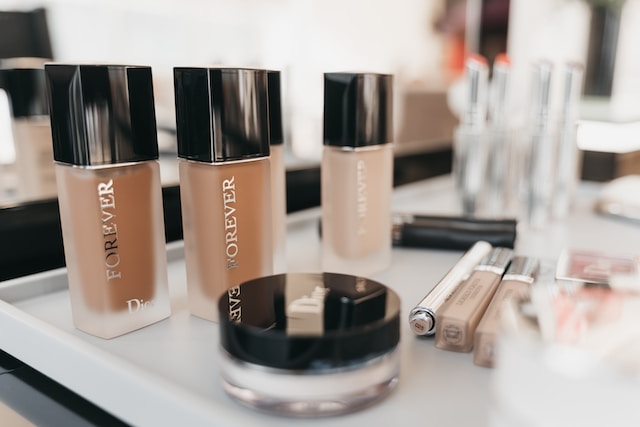When it comes to makeup, one of the most important products to get right is foundation. The right foundation can provide a smooth, even base for the rest of your makeup, while the wrong one can leave you looking patchy or cakey. With so many different types of foundations available, it can be tricky to figure out which one is right for your skin type. In this guide, we’ll walk How to Choose the Right Foundation for Your Skin Type, so you can achieve a flawless finish every time.
Step 1: Determine Your Skin Type
Before you can choose the right foundation, you need to know your skin type. There are four main skin types: oily, dry, combination, and normal. Here’s how to determine which one you have:
- Oily skin: If your skin tends to look shiny or greasy throughout the day, you likely have oily skin.
- Dry skin: If your skin feels tight or flaky, you likely have dry skin.
- Combination skin: If your skin is oily in some areas (usually the T-zone) and dry in others, you likely have combination skin.
- Normal skin: If your skin doesn’t feel particularly oily or dry, and you don’t experience many breakouts, you likely have normal skin.
Once you’ve determined your skin type, you can start looking for foundations that are specifically formulated for your skin’s needs.
Step 2: Consider Your Coverage Needs
Different foundations offer different levels of coverage, so you’ll want to consider what kind of coverage you’re looking for. Here are the most common types of foundation coverage:
- Sheer coverage: This type of foundation provides a light, natural-looking coverage that lets your skin show through.
- Medium coverage: This type of foundation provides more coverage than sheer, but still looks natural.
- Full coverage: This type of foundation provides the most coverage and can cover up blemishes, scars, and other imperfections.
Think about what kind of coverage you need based on your skin’s condition and what you want to cover up.
Step 3: Look for the Right Formula
Foundations come in many different formulas, from liquid to powder to cream. Here are some common formulas to consider:
- Liquid foundation: This is the most common type of foundation, and works well for all skin types. It can be buildable, providing light to full coverage.
- Powder foundation: This type of foundation is ideal for oily skin types, as it absorbs excess oil. It provides light to medium coverage.
- Cream foundation: This type of foundation is best for dry skin types, as it provides a lot of hydration. It provides medium to full coverage.
Consider your skin type and the level of coverage you’re looking for when choosing a formula.
- Step 4: Choose the Right Shade
Choosing the right shade of foundation is crucial for achieving a natural, flawless look. You’ll want to choose a shade that matches your skin tone as closely as possible. Here are some tips for choosing the right shade:
- Test the foundation on your jawline, not your wrist or hand. This will give you a more accurate idea of how it will look on your face.
- Test the foundation in natural light, not under store lighting, which can be misleading.
- If you’re in-between shades, choose the lighter one, as it’s easier to add warmth with bronzer or blush than it is to lighten a shade that’s too dark.
Step 5: Test the Formula
Once you’ve found a foundation that matches your skin tone and is formulated for your skin type and coverage needs, it’s time to test it out. Apply a small amount of the foundation to your face and blend it in. Check the finish in natural light and see how it looks on your skin. If it looks good and feels comfortable, you’ve found the right foundation for you!
Bonus Tips:
- If you have sensitive skin, look for foundations that are labeled “hypoallergenic” or “non-comedogenic” to avoid irritation or breakouts.
- If you have acne-prone skin, look for foundations that contain salicylic acid or benzoyl peroxide to help fight acne while providing coverage.
- If you have mature skin, look for foundations that contain anti-aging ingredients like hyaluronic acid or peptides to help plump and firm the skin.
In conclusion, choosing the right foundation for your skin type can be a bit overwhelming, but by following these steps, you can find the perfect foundation that matches your skin tone, provides the right level of coverage, and is formulated for your skin’s unique needs. Remember to take your time and test out different options before making a final decision. With the right foundation, you can achieve a flawless, natural-looking complexion every day!



Leave a Reply